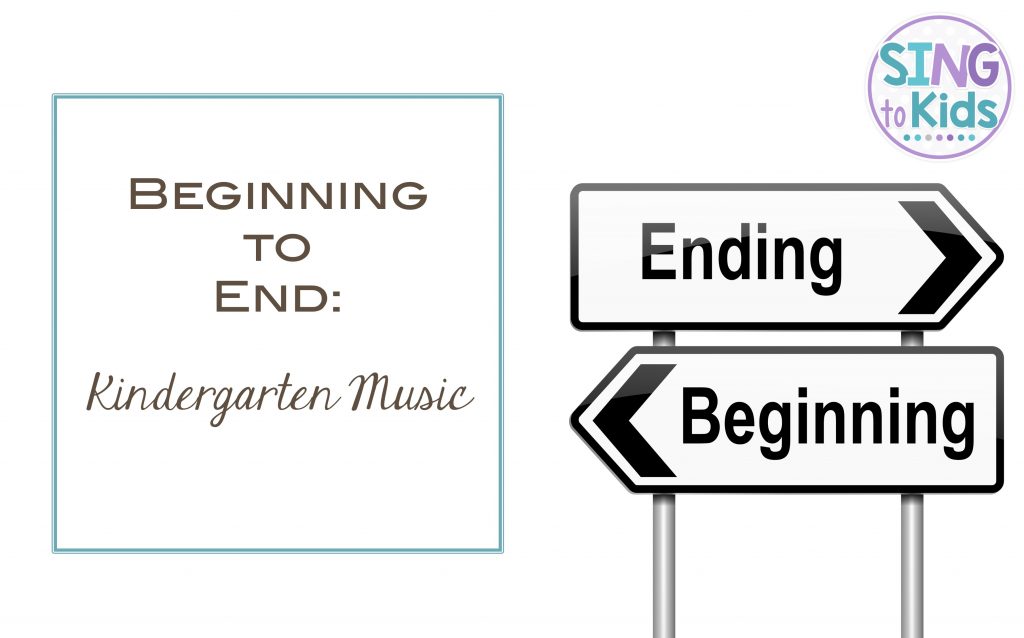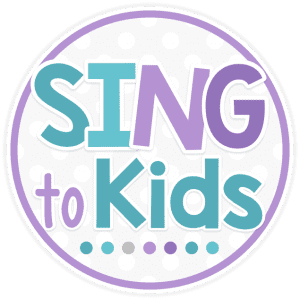
This summer, I wrote a blog post called “The Curious Case of the Quiet Kindergarten” which received a lot of interest and feedback. In the post, I wrote that I don’t allow my Kindergarten students to sing for the first six weeks of school. Instead of singing, we learn skills such as listening, audiating, moving, and following directions that serve us well when we do begin to sing. As this school year began, I started the first day of Kindergarten music in the same way. My students learned how to sit in music class, how to do “musical stretches,” how to move and freeze, how to listen, and most importantly, how to audiate.
I know not everyone agreed with me on this practice. I took that to heart and really reflected on my practice. As a teacher and the mother of a little one, I read a lot of educational research. I remember reading not too long ago an article that addressed the “Word Gap” in preschool students. You can read the entire article here, but to summarize the article, it states preschool students who hear and engage in rich vocabulary in the home were more successful in reading and school in general. Vocabulary development equated to overall success in school.
It made me think about music vocabulary and the impact this may have on music development. Do students who hear and engage in music vocabulary (musical patterns) experience greater success in music and music reading later in life? It makes sense that the same could be true musically. It supports the idea of giving our youngest students opportunities to listen, to audiate and eventually sing simple tonal and rhythm patterns. In doing so, we are building our students’ musical vocabulary.
The NAEYC outlined ideas to help develop a child’s vocabulary during the preschool years. I adapted the list to reflect ways we can do the same musically for our youngest students.
- Use lots of folk songs in lots of tonalities! Stretch yourself and your students to listen to and learn songs beyond major and minor! There are beautiful folk tunes in dorian, mixolydian and lydian. There are lots of resources out there with songs in other tonalities too. The reason behind this is simply: we learn not from things that are the same, rather from things that are different. You don’t need to explain that a song is in another tonality for a child to know it is different. Simply sing it for them and let them experience it.
- Use inflection while chanting or talking to your students. As music teachers, we spend a lot of time exploring and labeling the ways our voices work. Speaking, singing, whisper, playground voices abound in the music room! Include inflection in your exploration as well. It serves as a readiness to communicate expression and dynamics in music.
- Sing for children, not with them. I’m a bit of a stickler about this. Sing for your students, but do not sing with them. We know a phenomena called “split-second imitation” often occurs the music room. This happens most often when we sing with children. Find strategies and techniques to help teach songs to children and develop their ability to sing as an ensemble. Even in Kindergarten, the minute my students can sing a song, I go right to chord root harmonies. By not singing with your students, you help them to become independent musicians.
- Use lots of poetry and nursery rhymes in your instruction! There is such richness in language, meter, and rhythm within the nursery rhymes of our culture. Extend rhymes & poems with rhythm pattern instruction. Nursery rhymes provide musical context (meter) and the pattern instruction helps build a child’s music vocabulary.
- Interact with your children musically. So often we limit our musical interactions to echoing. Invite your students to improvise musically. Instead of singing a same pattern, ask them to sing a different pattern. Instead of YOU always giving the pattern to be echoed, have the student give you a pattern to echo! Can you imagine how boring like would be if we only echoed one another in conversation? Why do we promote that musically? Be different! Encourage improvisation in the music room!
- Give students opportunities to simply listen or audiate. Some methods use “inner hearing.” Don’t let the practice of audiation be an afterthought in the music room. Make it a priority in each and every lesson. Walk into any classroom and you’ll see teachers reading to their students. In doing so, students have opportunities to listen to fluent reading, inflection, wonder about context and content, make inferences and predictions about the story they are listening to. Can that happen musically? Absolutely! In music, fluency is all about phrasing. Context is the tonality or meter being presented. Content has to do with the kinds of melodic patterns they are hearing. Inferences and predictions happen when students predict musically what will happen next! Is it the end of the song, or is another phrase going to occur? Did the song end on the pitch I thought it would, or did it end on something unusual? We have to guide students how to listen to music and audiation is a wonderful way to nurture that skill.
Check back in the coming weeks to find out what we do next! If you are looking for some resources with songs in different tonalities – check out my Songs for Little Ones Series on TeachersPayTeachers. Lots of great songs and chants for each season. Each set comes with coloring sheets and Interactive White Board Charts.















This comment has been removed by a blog administrator.